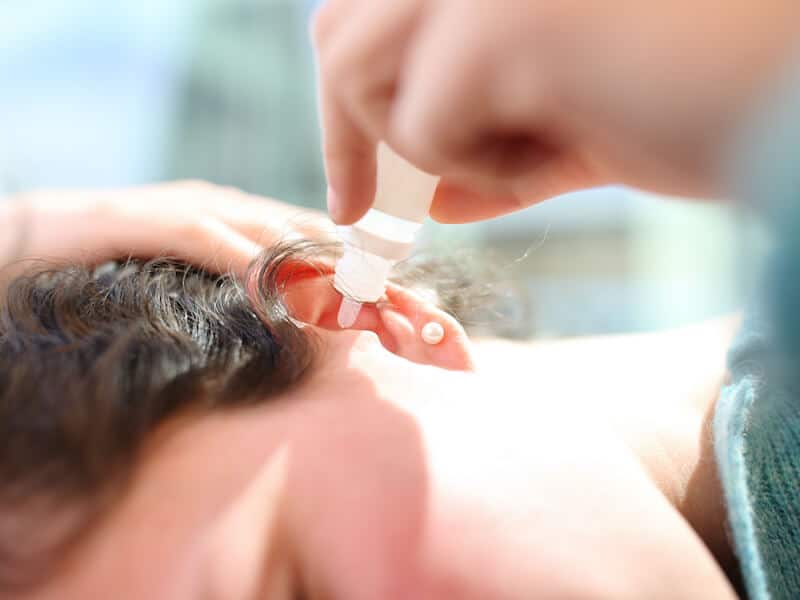- Why Tinnitus Feels Louder at Night and How to Manage It - August 26, 2025
- How Treating Hearing Loss Prevents Falls and Accidents - August 16, 2025
- Managing Tinnitus During Summer - August 5, 2025
Ear health is an integral part of overall well-being, yet it is often overlooked until problems arise. With our ears constantly exposed to different environments, safe cleaning is key to preventing issues.
However, there’s a fine line between proper ear care and potentially harming the delicate structures within our ears. This guide will walk you through how to safely clean your ears. If you need more support or professional earwax removal, reach out to a hearing healthcare professional for personalized guidance.
Understanding Earwax
Before diving into cleaning practices, it’s important to understand more about earwax. Earwax, or cerumen, is a natural substance produced by glands in the ear canal. Its main roles are to protect the ear from dust, foreign particles, and microorganisms, and to aid in the cleaning and lubrication of the ear canal.
The Do’s and Don’t of Ear Cleaning
When it comes to cleaning your ears at home, here are some important do’s and don’ts to keep in mind:
Do Wipe the Outer Ear
Using a damp cloth, gently wipe the outer part of the ear. This removes any excess earwax that has naturally migrated out of the ear canal, along with daily dust and debris.
Do Use Ear Drops Wisely
If you’re experiencing a sensation of excess earwax or fullness in the ear, over-the-counter ear drops can help soften it. These drops often contain hydrogen peroxide or mineral oil, which can help in the natural earwax removal process.
Do Dry Your Ears Properly
After showering, swimming, or using ear drops, make sure your ears are dried thoroughly. Tilt your head to each side to allow water to drain out, then gently dry your outer ear with a towel. Avoid inserting the towel into the ear canal.
Don’t Use Cotton Swabs
Inserting cotton swabs (or any objects) into the ear canal can push wax further in, leading to impaction. Moreover, it risks damaging the ear canal or eardrum.
Don’t Use Ear Candles
Ear candling, a practice that involves inserting a lit, hollow candle into the ear to supposedly pull out earwax, is both ineffective and dangerous. It can lead to burns, earwax impaction, or eardrum perforation.
Don’t Over-Clean Your Ears
Earwax is beneficial, and over-cleaning can strip the ear canal of its natural protection, leading to dryness, itching, and infection.
When to See a Professional
Sometimes, despite our best efforts, earwax can build up and lead to discomfort, hearing loss, tinnitus, or infections. In these cases, it’s important to seek professional help. A hearing health professional can safely remove earwax without risking damage to the ear.
Types of Professional Earwax Removal
- Microsuction Earwax Removal: This method involves using a small, medical-grade suction device to gently remove earwax under direct visualization. It’s considered one of the safest and most comfortable procedures for earwax removal.
- Ear Irrigation: Ear irrigation involves using a controlled stream of warm water to soften and wash away earwax from the ear canal. It might not be suitable if you have had previous ear surgeries or eardrum perforations.
- Manual Removal: Using specialized tools like curettes, ear picks, or forceps, a healthcare professional can manually remove earwax. This method is often used when the earwax is very hard or impacted.
- Ear Drops: While not a removal method on their own, ear drops are often used by professionals either as a standalone method for mild earwax buildup or as a preparatory step before the other procedures. They work by softening the earwax, making removal easier and more comfortable.
Each of these methods has its specific applications, and a hearing health professional can determine the most appropriate approach based on your condition, ear anatomy, and health history. These methods are safe and can provide immediate relief from symptoms associated with earwax build-up.
The Importance of Professional Earwax Removal
While it might be tempting to try and solve earwax problems on your own, nothing substitutes the safety and ease of professional earwax removal. Hearing health professionals not only address the immediate issue but can also identify any underlying problems that might be contributing to excessive earwax production or other ear-related concerns.
Regular check-ups with a hearing specialist can also help prevent earwax from becoming a problem in the first place. We provide personalized advice on ear care practices suited to your specific needs, ensuring that your ears remain healthy and fully functional.
Contact Us Today
If you’re experiencing discomfort, or believe you might have excessive earwax, it’s time to seek help. Visit us for safe, effective earwax removal and personalized ear care advice.

